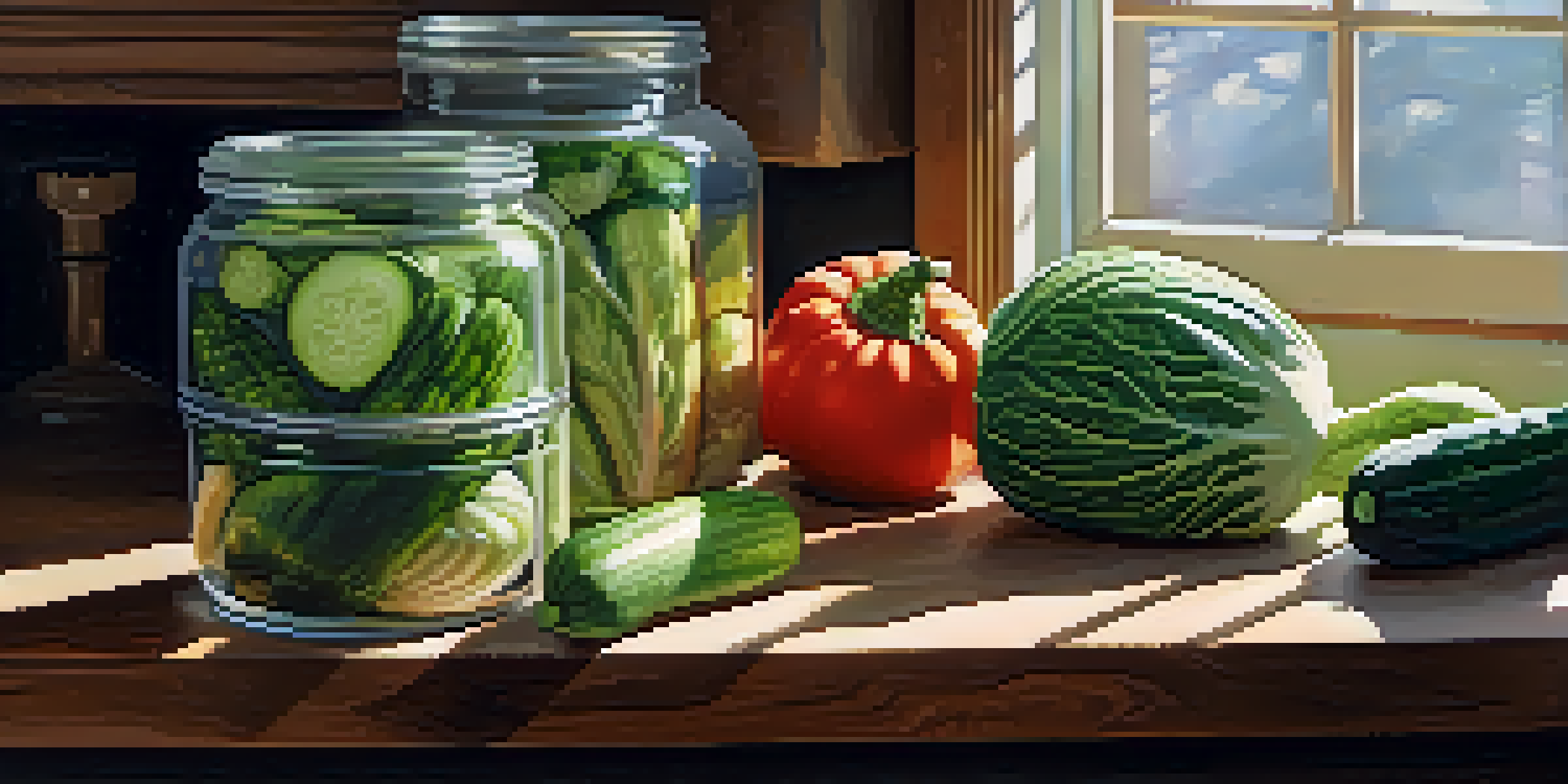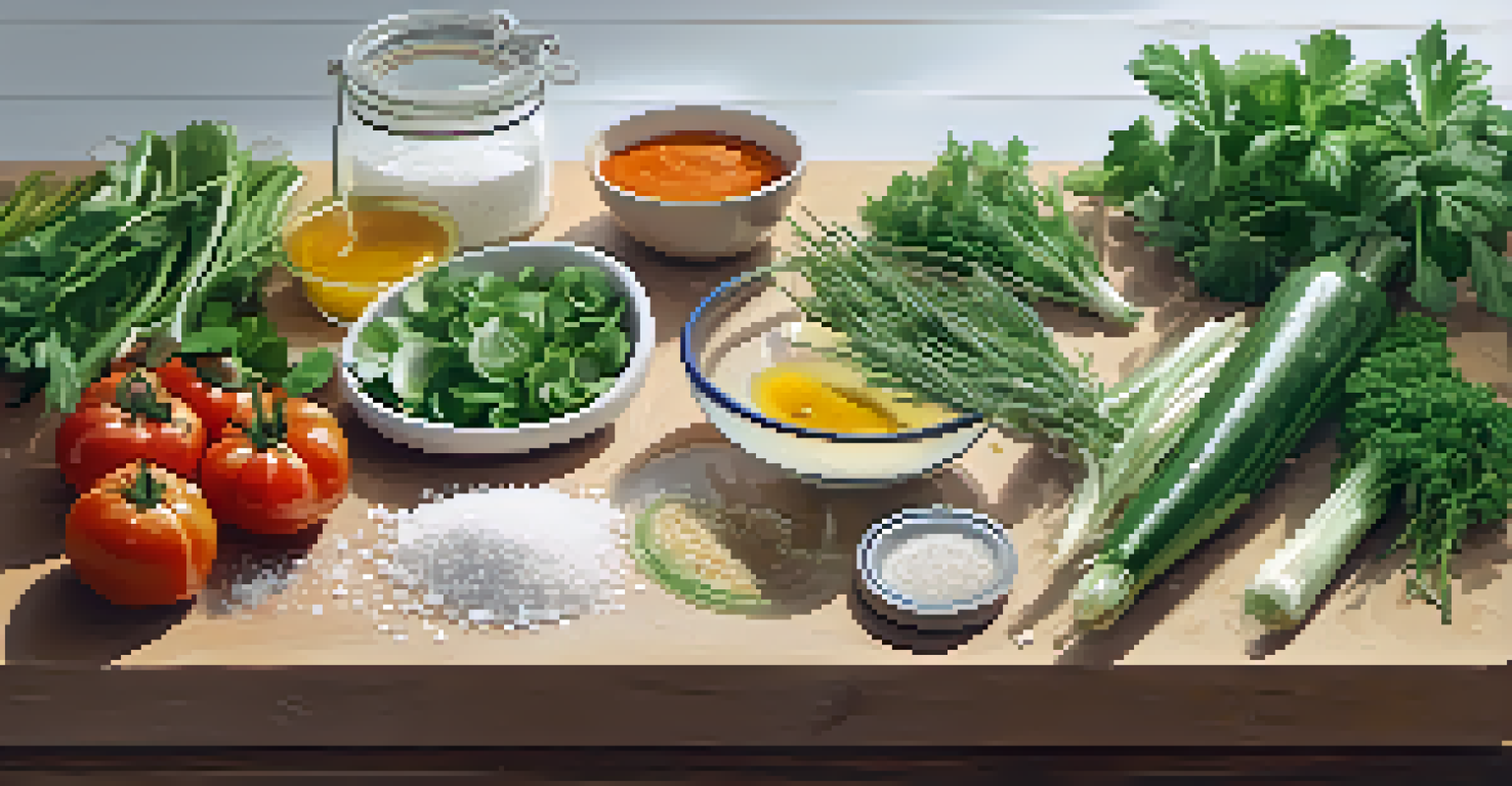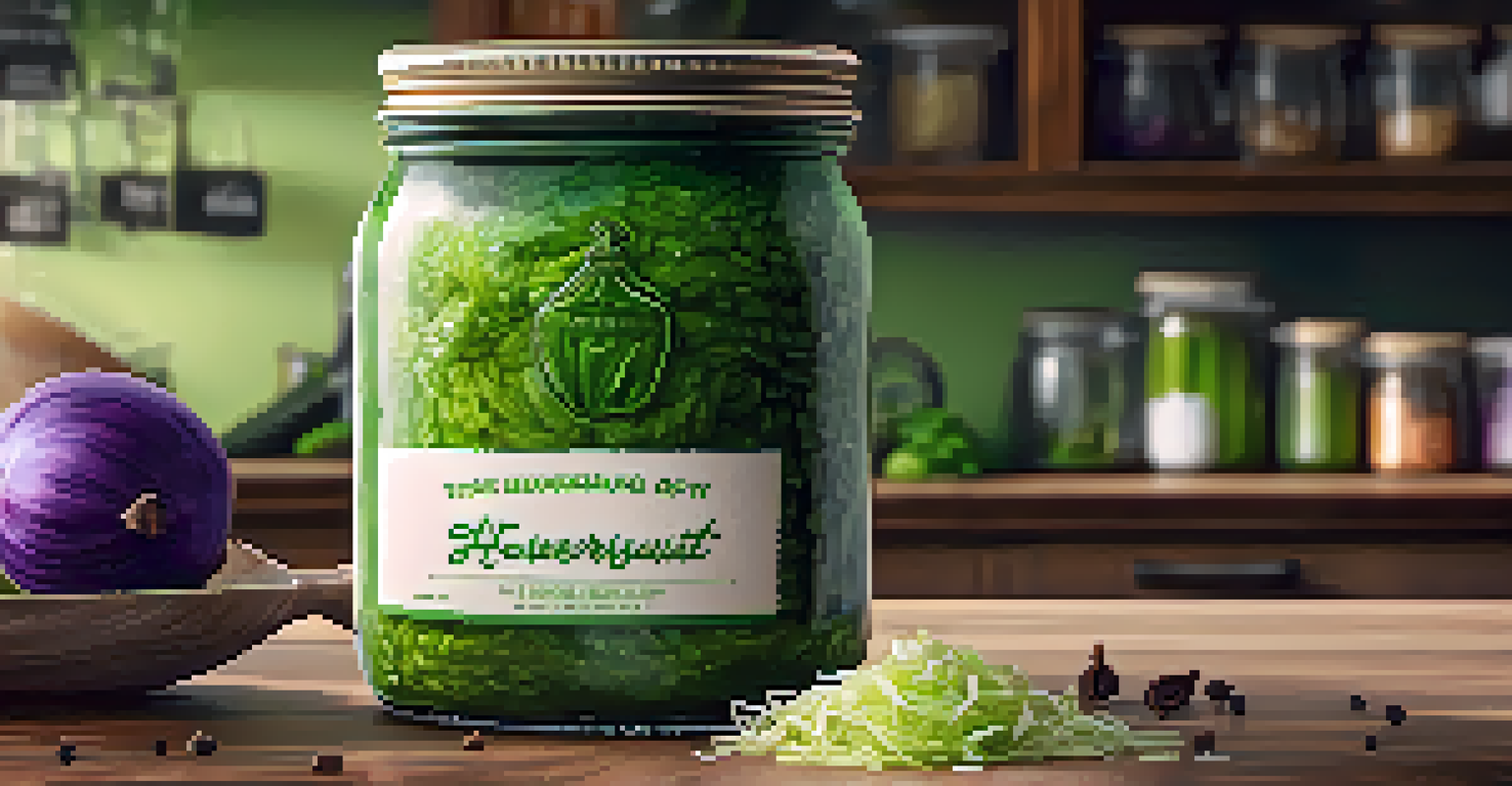How to Make Your Own Fermented Raw Foods at Home

Understanding the Basics of Fermentation at Home
Fermentation is a natural process where microorganisms like bacteria and yeast break down sugars in food. This not only preserves the food but also enhances its flavor and nutritional value. Think of it as a friendly little science experiment happening right in your kitchen!
Fermentation is the age-old art of transforming food into something more delicious and nutritious.
When you ferment foods, you're essentially creating a symbiotic relationship between these microorganisms and the food itself. This process can lead to the development of probiotics, which are beneficial for gut health. So, by making your own fermented foods, you're also giving your digestive system a little boost.
Understanding this basic principle of fermentation sets the stage for your own culinary adventures. It’s a rewarding experience that brings a sense of accomplishment, not to mention the tasty results you'll get to enjoy!
Essential Ingredients for Your Fermented Foods
To get started with fermentation, you'll need a few key ingredients. The star players include fresh vegetables or fruits, water, salt, and, in some cases, starter cultures or whey. Each ingredient plays a vital role in the fermentation process, helping to create the right environment for those beneficial microorganisms.

For instance, salt acts as a preservative and helps control the fermentation process, preventing unwanted bacteria from spoiling your food. You can experiment with different types of vegetables, like cabbage for sauerkraut or cucumbers for pickles, to discover your favorite flavors.
Fermentation Basics Explained Simply
Fermentation is a natural process where microorganisms break down sugars in food, preserving it while enhancing flavor and nutrition.
Having high-quality ingredients is crucial for successful fermentation. Fresh, organic produce not only offers better flavor but also contains more nutrients, which can enhance the health benefits of your homemade fermented foods.
Choosing the Right Equipment for Fermentation
You don’t need fancy equipment to start fermenting at home; a few basic tools will do. A glass jar is typically the go-to choice for beginners, as it allows you to monitor the fermentation process without introducing unwanted flavors. You can also use fermentation crocks or airlock lids for advanced methods.
The process of fermentation is a dance between the food and the microorganisms that enhance its flavors and health benefits.
Make sure your jars are clean and sterilized to avoid contamination. A simple wash with hot, soapy water followed by a rinse should suffice. The key here is to create an environment that encourages beneficial bacteria to thrive while keeping harmful bacteria at bay.
If you want to take your fermentation game to the next level, consider investing in specialized fermentation lids or weights. These tools help regulate airflow and keep your food submerged, both of which are important for successful fermentation.
Step-by-Step: Making Your First Fermented Vegetable
Let’s dive into the process! Start by chopping your chosen vegetables into small pieces, making them easier for the bacteria to access. For example, if you're using cabbage, shred it finely to create sauerkraut. This step is all about maximizing surface area for fermentation.
Next, mix the chopped vegetables with salt in a bowl. The salt will draw out moisture, creating a brine that helps preserve the vegetables while they ferment. Allow the mixture to sit for about 10 minutes, giving the salt time to work its magic.
Key Ingredients for Fermentation
Essential ingredients like fresh vegetables, salt, and water create the right environment for beneficial microorganisms during fermentation.
Finally, pack the vegetable mixture tightly into your jar, pressing down to eliminate air pockets. Pour any remaining brine over the top, ensuring the vegetables are submerged. Seal the jar and store it in a cool, dark place for about 1-4 weeks, depending on your taste preference. Each day, check on it and taste as it ferments!
Fermentation Time: How Long Should You Wait?
Patience is key when it comes to fermentation. The time it takes for your fermented food to be ready can vary widely depending on several factors, including temperature and the type of food you're fermenting. Generally, you can expect a fermentation period of anywhere between 3 days to several weeks.
A good rule of thumb is to taste your ferment regularly. This will help you understand how flavors develop over time and when you might want to stop the fermentation process. If you prefer a milder flavor, you might want to store it in the fridge sooner rather than later.
Remember that the longer you let it ferment, the tangier and more complex the flavors will become. So, trust your palate and enjoy the journey of discovering your perfect fermentation timing!
Storing Your Fermented Foods for Maximum Freshness
Once your fermented food has reached the desired taste, it's time to store it properly. Transfer it to the refrigerator, where the cold temperature will slow down the fermentation process and help preserve its flavors. This allows you to enjoy your creation over an extended period.
It's best to use airtight containers to keep your fermented foods fresh and prevent contamination. If you notice any off smells, colors, or mold, it’s best to err on the side of caution and discard the batch. Trust your senses to guide you in determining the quality of your fermented foods.
Patience is Essential for Fermentation
The fermentation period can vary widely, so tasting regularly helps determine when your creation reaches the perfect flavor.
Having your own stash of homemade fermented foods can be a delightful addition to meals. You can enjoy them as a side dish, mix them into salads, or even use them as a topping for sandwiches. The possibilities are endless!
Exploring Beyond Basics: Advanced Fermentation Techniques
Once you’ve mastered the basics of fermenting vegetables, there’s a whole world of flavors waiting to be explored. You might want to try fermenting fruits, making your own yogurt, or even brewing kombucha. These advanced techniques can be incredibly rewarding and add variety to your homemade pantry.
For instance, fruit fermentation can create delightful jams or sauces that are both sweet and tangy. Similarly, yogurt fermentation allows you to customize flavors by adding fruits or spices, creating a delicious and nutritious snack.

As you experiment with different techniques, keep notes of your successes and failures. This will help you refine your skills and develop a personal touch in your fermentation journey. The more you explore, the more unique flavors you’ll discover!